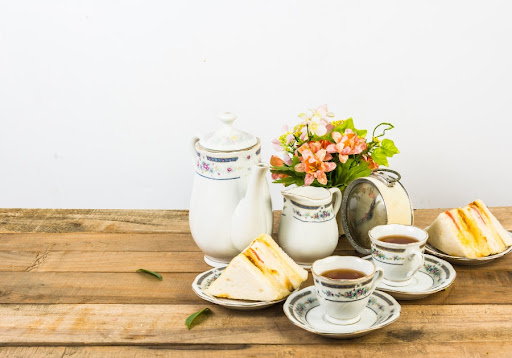Key Takeaways:
- Tea culture originated in ancient China, evolving alongside pottery techniques over thousands of years.
- The Tang dynasty was pivotal in developing elegant tea pots that served both functionality and artistry.
- Distinct styles emerged in different cultures, such as Yixing teapots in China and Victorian teapots in Britain.
- Modern technology has introduced innovative materials and smart features, enhancing tea brewing experiences.
- Choosing a teapot set involves considering material types, sizes, and functional designs tailored to hosting needs.
- Aesthetic appeals play a significant role in selecting a teapot set that complements existing decor.
- Understanding different tea types and their brewing conditions is crucial for flavor maximization.
- Proper cleaning and maintenance techniques should align with the materials of the teapot to ensure longevity.
- Storing teapot sets correctly prevents damage, and displaying them can enhance their visual appreciation.
- Minor repairs can often be DIY, but significant damages should be handled by professionals to preserve function and aesthetics.
“`html
History and Evolution of Tea Pot Sets: From Ancient Ceramics to Modern Designs
The Origins of Tea Culture and its Influence on Pottery
Tea culture dates back thousands of years, primarily rooted in ancient China, where the practice of brewing tea began in the Shang dynasty, around 1500 BC. Initially, tea was prepared using loose leaves boiled in water, with no specialized vessels. The introduction of tea pottery came much later, around the Tang dynasty (618-907 AD), as ceramic techniques advanced to create more refined and effective methods for steeping. This period marked a significant evolution in both tea preparation and the aesthetics of tea-related ceramics, leading to the development of elegant teapots that were not merely functional but also beautiful art pieces.
As trade routes expanded, particularly during the Silk Road days, the influence of Chinese tea culture reached places like Japan and Europe. In Japan, the tea ceremony evolved into an important cultural ritual, and with it, the need for exquisite pottery became paramount. The popularity of tea in Europe took off in the 17th century, where distinct styles emerged, including ornate English bone china and Dutch Delftware, each reflecting local designs, social structures, and drinking habits. The mesmerizing dance of tea culture and pottery has created a rich tapestry of styles, materials, and traditions that still inform contemporary tea pot design today.
Iconic Tea Pot Styles Through the Ages
Through history, various styles of teapots have defined distinct eras and cultures. The most iconic perhaps is the Yixing teapot from China, prized for its unique clay and craftsmanship, which is believed to enhance the flavor of tea. These pots are recognizable for their earthy hues and often feature intricate designs inspired by nature or classical symbols. In contrast, the British teapot became a staple in the Victorian era, characterized by elaborate designs, decorative embellishments, and practical designs that catered to the formal tea service of the time.
Another notable style is the Japanese kyusu, a teapot designed specifically for brewing green tea. It features a side handle for ease of pouring and is crafted from various materials, such as clay or porcelain. Its humble design, often embellished with motifs of nature, reflects the Japanese principles of simplicity and beauty in everyday life.
Modern designs continue to evolve, often blending traditional elements with contemporary aesthetics. Designers today are experimenting with materials, shapes, and functionalities, leading to innovative pieces that still honor the rich history of the tea pot while appealing to modern sensibilities. The evolution of tea pot sets is a compelling narrative of craftsmanship and artistry that serves as a testament to humanity’s love affair with tea.
How Modern Technology is Shaping Contemporary Tea Pot Designs
In recent years, technology has played an increasingly significant role in the design and functionality of tea pots. The introduction of materials like borosilicate glass, which offers durability and heat resistance, allows for a whole new dimension in design transparency, letting the user visually appreciate the tea infusion process. Likewise, silicone materials have introduced flexibility and creative designs that were not previously possible, while 3D printing technologies have enabled artisans to create intricate patterns and complex shapes with ease.
Moreover, the rise of smart gadgets has led to the creation of electric tea pots equipped with precision temperature controls and brewing timers. These advancements cater to the burgeoning demand for personalized tea experiences, ensuring the exact temperature and steeping time for each type of tea, thus enhancing flavor and aroma. As tea becomes an integral part of gourmet experiences, these modern technologies serve not only to streamline but also to elevate the tea brewing ritual, making it a delightful blend of tradition and innovation.
Choosing the Perfect Tea Pot Set for Your Taste and Needs
Material Matters: Porcelain, Clay, and Beyond
When selecting a tea pot set, the material plays a crucial role in the overall brewing experience and the flavor of the tea. Porcelain is among the most popular choices due to its aesthetic appeal, heat retention properties, and non-porous surface that does not absorb odors or flavors. Fine porcelain teapots often come with delicate designs and can elevate any tea occasion with their elegance and charm.
On the other hand, clay teapots, particularly those made from Yixing clay, provide a unique brewing experience. These pots are porous, allowing them to absorb the flavors of the tea brewed within them, enhancing the taste over time. The more you use an Yixing pot for a specific type of tea, the better the infusion becomes as it acquires depth from previous brews. Clay is ideal for connoisseurs who enjoy specific types of tea and wish to tailor their brewing experience.
Stainless steel and glass are also viable options, each with unique benefits. Stainless steel teapots are robust, easy to clean, and often come with modern designs suited for contemporary kitchens. They are excellent for casual use but tend to lose some of the intricacies of brewing due to heat retention issues. Glass teapots, meanwhile, provide a visual tea-drinking experience and are perfect for showcasing beautiful tea leaves unfurling, although care must be taken to avoid thermal shock. Understanding the materials and their properties will enable you to select a teapot that best suits your personal preferences and brewing habits.
Size and Functionality: How to Select for Your Tea Parties
Tea parties can range from intimate gatherings to large social events, and the size of your tea pot set should align with your hosting needs. For small occasions, a teapot that holds about 2-4 cups is often sufficient and allows for easy pouring, while larger gatherings may require a pot capable of holding up to 10 cups or more. Choosing the right size means considering not only the number of guests but also the types of tea you’ll serve. For varied tea offerings, having multiple smaller pots can enhance the experience by allowing each tea to be served fresh and potent.
Functionality also extends beyond capacity. Features such as ergonomic handles, drip-proof spouts, and infusers are instrumental in improving usability. A built-in infuser can be advantageous for loose-leaf tea, providing convenience and ease when brewing. Additionally, consider whether the teapot is suitable for stovetop or electric use, as this can influence your brewing method and presentation style. Ultimately, the ideal tea pot set balances size and functionality suited to your entertaining style and the preferences of your guests.
Design Aesthetics: Finding a Set that Compliments Your Style
The aesthetic appeal of a tea pot set can significantly contribute to the overall ambiance of your tea gatherings. When selecting a design, consider the existing decor and personality of your space. For a rustic kitchen or dining area, handcrafted, earthy ceramic designs in muted colors can enhance the charm. On the other hand, a modern, minimalist home may benefit from sleek, stainless steel teapots with clean lines and geometric forms.
Additionally, consider thematic cohesion with decorative elements. If you have a collection of vintage china, a classic English tea pot would complement it beautifully. Patterns, colors, and motifs can all play a significant role in setting the tone, making tea time feel elegant or casual. Trends such as botanical prints, geometric patterns, and artisanal finishes offer exciting choices for personal expression while ensuring that tea time becomes an aesthetically pleasing experience.
The Art of Brewing Tea: Tips for Making the Most of Your Tea Pot Set
Understanding Tea Types: Matching Leaves to Your Tea Pot
To maximize the potential of your tea pot set, it’s essential to understand the diverse types of tea and how they interact with different pot materials. The most common tea types include black, green, white, oolong, and herbal, each requiring specific brewing conditions to unlock their unique flavors and aromas. For instance, delicate green teas require lower water temperatures to avoid bitterness, while robust black teas benefit from a full boiling temperature.
Moreover, the choice of teapot material can influence the taste of the tea. Porcelain is ideal for a broad range of tea types, as it retains temperature well without imparting flavors, whereas unglazed clay pots are recommended for oolong or pu-erh teas due to their ability to enhance the tea’s characteristics through seasoned brewing. Understanding these pairings allows you to choose the right combinations for an enriched tea experience.
Brewing Techniques: Temperature, Timing, and Taste
Brewing tea is both an art and a science, requiring attention to detail to achieve optimal flavor. Temperature and timing are crucial variables. Each tea variety has its recommended temperature range and steeping time. For instance, black tea typically steeps for 3-5 minutes at temperatures between 200-212°F (93-100°C), while delicate white and green teas fare better at 160-185°F (71-85°C) with shorter steeping times of 2-3 minutes.
Using a thermometer can help ensure precision, especially when working with high-quality loose leaf teas that vary in delicacy and flavor notes. Experimenting with different temperatures and steeping times allows for personalization and discovering flavor profiles tailored to your palate. Remember, the ultimate goal is to develop a method that yields tea that excites and satisfies your taste buds.
Enhancing Your Experience: Accessories to Pair with Your Tea Pot Set
Pairing your tea pot set with the right accessories can significantly enhance the overall tea brewing experience. Essential tools include high-quality tea strainers, which ensure that loose leaves do not end up in the cup, and tea scoops for accurate measuring. Additionally, a heating element or tea warmer can help maintain your tea at the perfect temperature while entertaining guests.
Consider adding decorative elements such as matching cups, a tea tray for serving, and beautiful napkins to create a cohesive tea service. Incorporating herbal infusions or flavored teas can add variety, and small treats such as biscuits or pastries can elevate the occasion, making your tea party more memorable and satisfying. Ultimately, the goal is to create an inviting atmosphere where quality tea can be enjoyed alongside delightful conversation.
Care and Maintenance: Keeping Your Tea Pot Set in Pristine Condition
Cleaning Techniques for Different Materials
To preserve the beauty and functionality of your tea pot set, proper cleaning techniques must be employed, taking into account the materials used. For porcelain or ceramic teapots, hand washing is recommended. Use mild dish soap and a soft sponge to avoid scratching the glaze. Rinse thoroughly and allow them to air dry. Avoid placing them in the dishwasher, as high temperatures can cause cracks or damage.
Clay teapots, particularly Yixing varieties, require special care. They should not be washed with soap, as it can diminish the pot’s seasoned flavor. Instead, rinse with hot water immediately after use, allowing the natural oils and tea residue to contribute to flavor enhancement over time. Ensure they are fully dry before storing to prevent mold growth.
Stainless steel and glass pots offer more durability and can often be cleaned in the dishwasher, but hand washing is still advisable to prevent scuff marks. For glass, ensure that any stains or tea residue are removed promptly to maintain clarity. Regular upkeep can keep your tea pot set looking stunning and ensure longevity for years of tea enjoyment.
Storage Tips to Preserve Longevity and Aesthetics
Storing your tea pot set properly is crucial for maintaining both its aesthetics and functionality. Ensure that each piece is stored in a cool, dry place away from direct sunlight to prevent fading or deterioration of colors and patterns. Use protective padding or cloths between pieces to prevent scratching or chipping, especially when it comes to delicate porcelain or glass.
Consider displaying your tea pot set on a dedicated shelf or cabinet where it can be appreciated, but also remains protected from potential damage. Avoid stacking pots unless they are designed for such storage, as this can lead to cracks over time. For seasonal teapots, ensure that they are thoroughly cleaned and dried before being boxed up for storage to prevent any moisture-related issues which could contribute to potential damage during their off-seasons.
Repairing Common Issues: When to DIY and When to Seek Help
Like any treasured belongings, your tea pot set may encounter issues such as chips, cracks, or missing parts over time. Minor scratches on glass can sometimes be polished out with a professional scratch-remover kit. For porcelain, small chips can often be mitigated with specialized glue, although this may affect aesthetics. For clay pots, if a crack develops, it is essential to decide whether it compromises the pot’s functionality. If it does, repair is crucial, and seeking a professional who specializes in pottery restoration is always the best course of action.
However, larger breaks or complex repairs should generally be handled by a skilled craftsman to avoid further damage. There’s a fine line between a well-loved, imperfect piece and one that is no longer functional. Investing in repairs can ensure that your beloved tea pot set remains a cherished part of your tea-drinking tradition, allowing it to serve you lovingly through many more gatherings and cozy tea moments to come.
FAQ
Question: How can I determine the best material for my tea pot set?
- The best material for your tea pot set depends on your brewing preferences and the types of tea you enjoy. Porcelain is versatile for many tea types, while clay pots, like Yixing, are excellent for enhancing specific flavors over time.
Question: What sizes of tea pots are available for different occasions?
- Tea pots come in various sizes, from small (2-4 cups) for intimate gatherings to larger pots (10 cups or more) suitable for bigger events. Consider your guest count and the variety of teas you plan to serve when choosing a size.
Question: Are there specific tea pot designs that are considered traditional versus modern?
- Traditional tea pot designs often reflect cultural heritage, such as the ornate Victorian teapots or the simple elegance of Japanese kyusu. Modern designs may incorporate sleek lines, new materials, and functional features that blend traditional artistry with contemporary aesthetics.
Question: How often should I clean my tea pot set, and does it differ by material?
- Cleaning frequency can vary; however, it’s recommended to clean your tea pot set after each use. Different materials require specific care: porcelain needs gentle hand washing, while clay pots should only be rinsed with water to preserve their seasoned flavor.
Question: Can I use a tea pot set for non-tea beverages?
- Yes, tea pot sets can be used for other beverages like herbal infusions, flavored teas, or even some cocktails! Just be mindful of the flavors, as certain materials might retain or influence taste over time.
Question: What accessories are essential to enhance my tea brewing experience?
- Essential accessories include high-quality tea strainers, scoops for measuring, and a tea warmer to maintain temperature. Additional items like matching cups and a proper serving tray can elevate the overall tea experience.
Question: How should I store my tea pot set to avoid damage?
- Store your tea pot set in a cool, dry place, using protective padding between pieces to prevent scratches or chipping. Displaying them thoughtfully on shelves can also create an aesthetic appeal while protecting them from damage.
Question: What are some signs that my tea pot might need professional repair?
- If your tea pot shows significant damage such as large cracks, major chips, or if it no longer functions properly, it’s advisable to seek the help of a professional. DIY repairs can be suitable for minor issues, but more severe damage often requires expert restoration.
Useful Resources








